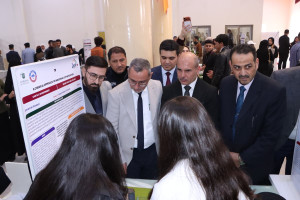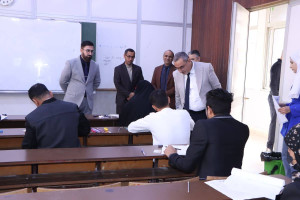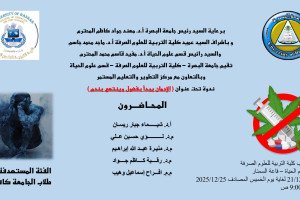
The College of Education for Pure Sciences in the Department of Computer Science at the University of Basrah discussed a master’s thesis on (preserving privacy in secure image retrieval while protecting copyright in cloud computing)
The message presented by the researcher (Ali Lazem Lafta) included
Every day, an enormous amount of image data is generated as a result of recent advances in imaging and computing technology. Several content-based image retrieval (CBIR) methods have been introduced for image collection searches. However, these methods require a high amount of computing and storage resources. Cloud servers can address this problem by offering a high amount of computing resources at a low cost. However, cloud servers are not entirely trustworthy, and because the data owner needs to keep their personal information private.
For the purpose of this message, we propose and implement a Secure Content-Based Image Retrieval (SCBIR) system to search a set of images in a cryptographic environment. In our system, we use Vector Of Locally Aggregated Descriptors (VLAD) method and use the Asymmetric Scalar-Product-Preserving Encryption (ASPE) approach to encode these vectors which enables us to compute the similarity between vectors representing images even in an environment encryption. To improve vector search time, all vectors representing images in their encoded form were iteratively aggregated using the k-means method to create a tree-shaped index of image-specific features.
The thesis concluded that the SCBIR approach is faster in indexing and retrieval than previous systems, with high retrieval accuracy and scalability. In this message, a watermark system integrated with encrypted images is introduced to detect any illegal leaks of images retrieved from illegal users of the system. On this basis, the cloud server integrates a unique watermark especially for each user into the retrieved encrypted images before sending them to the system user. On this basis, if it is discovered that a copy of the recovered images has been leaked to unauthorized persons, the watermark can be extracted to identify the user who leaked this image to unauthorized persons.
The proposed system showed more than 8 to 11% average results of better accuracy than well-known schemes with the ability to recognize complex patterns, and it maintains an execution speed that exceeds other systems. The security of the proposed scheme is analyzed. The safety and performance of the proposed scheme are proven by experimental results.








